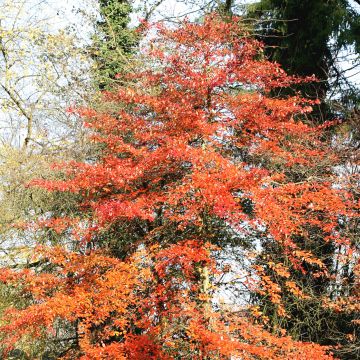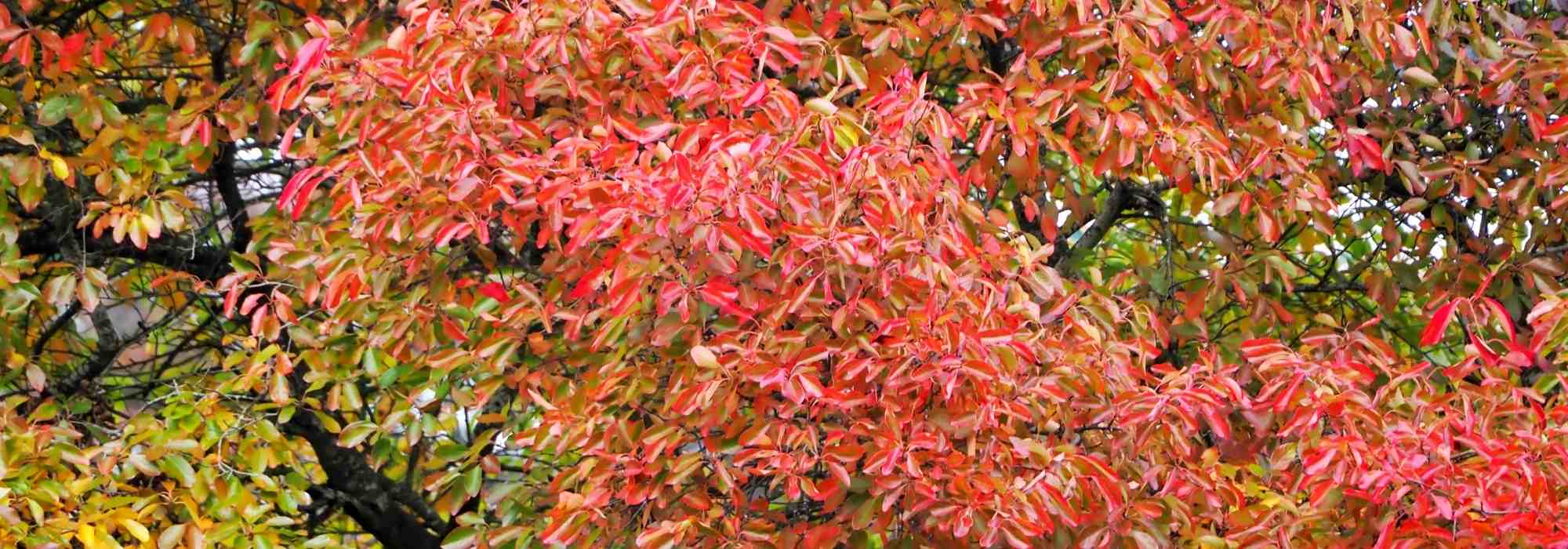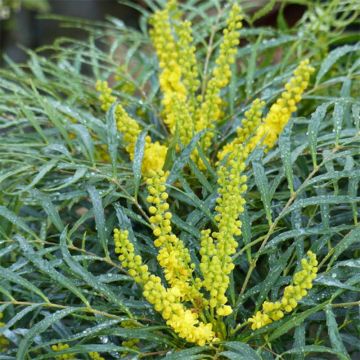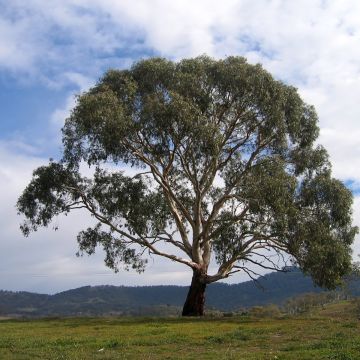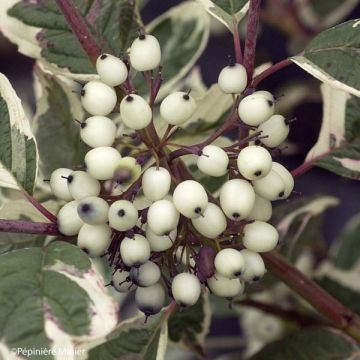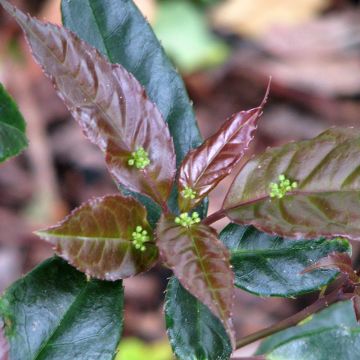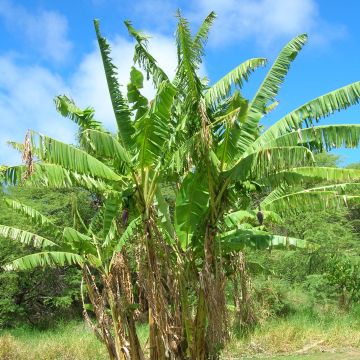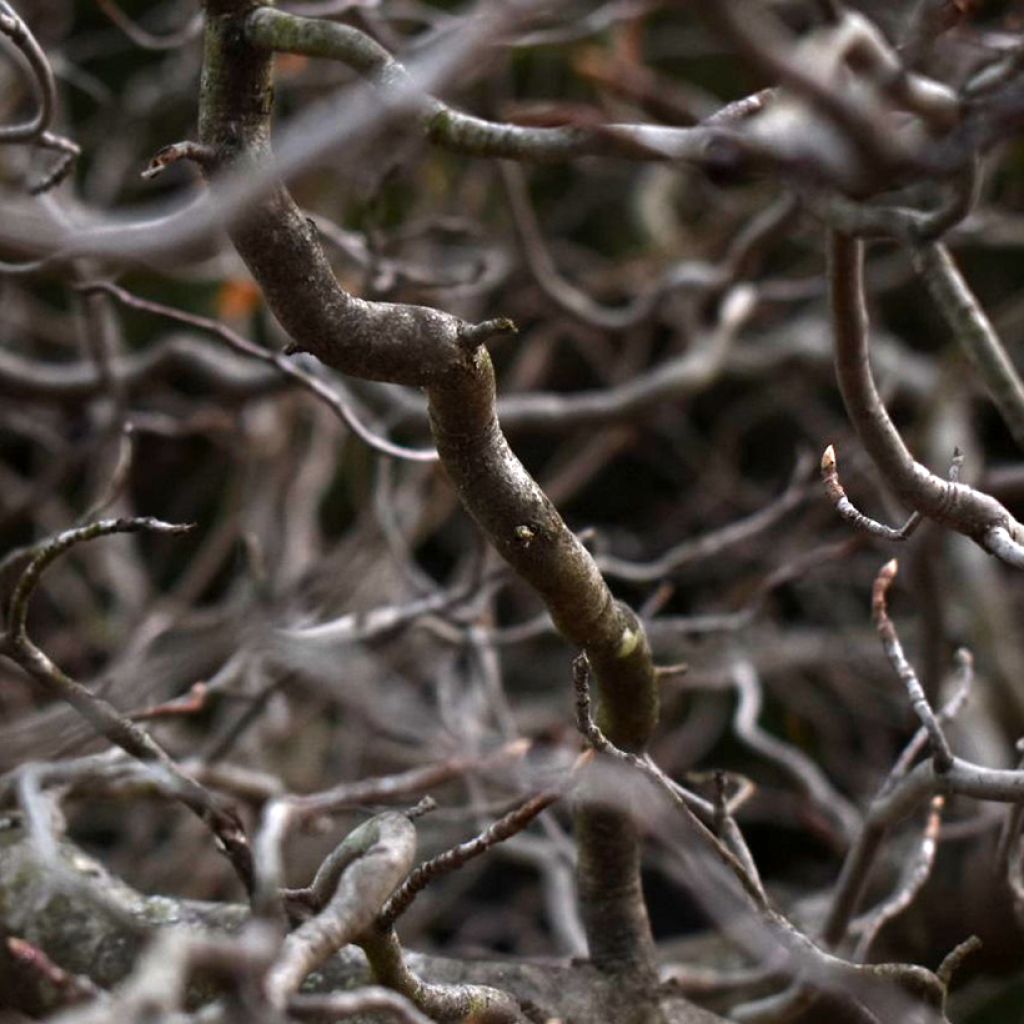

Nyssa sylvatica Zydeco Twist - Tupelo
Nyssa sylvatica Zydeco Twist - Tupelo
Nyssa sylvatica Zydeco Twist
Tupelo
Special offer!
Receive a €20 voucher for any order over €90 (excluding delivery costs, credit notes, and plastic-free options)!
1- Add your favorite plants to your cart.
2- Once you have reached €90, confirm your order (you can even choose the delivery date!).
3- As soon as your order is shipped, you will receive an email containing your voucher code, valid for 3 months (90 days).
Your voucher is unique and can only be used once, for any order with a minimum value of €20, excluding delivery costs.
Can be combined with other current offers, non-divisible and non-refundable.
Why not try an alternative variety in stock?
View all →This plant carries a 24 months recovery warranty
More information
We guarantee the quality of our plants for a full growing cycle, and will replace at our expense any plant that fails to recover under normal climatic and planting conditions.
Would this plant suit my garden?
Set up your Plantfit profile →
Description
Nyssa sylvatica 'Zydeco Twist' is a unique selection of Black gum or Tupelo that exhibits a zigzag, twisted branching, quite similar to that of the twisted willow. It is a deciduous tree whose foliage is adorned with sumptuous shades of reddish-orange in autumn. In winter, its unreal structure can be admired. With a modest stature, decorative throughout the year, this unique small tree is suitable for small gardens. It prefers slightly moist and lime-free soils. It will create a sensation near a natural pond.
Nyssa sylvatica belongs to the relatively unknown family of Nyssaceae, which only includes 5 genera, the most well-known being the dove tree. This tree is native to the eastern United States and is still relatively uncommon in our latitudes. While the Tupelo can reach a height of 35 metres (115 feet) in its country of origin, it will rarely exceed 20 metres (66 feet) in height here. Nevertheless, even though its growth is rather slow, its mature size makes it more suitable for parks than for our gardens.
The cultivar 'Zydeco Twist', with its slow growth, is well-suited to the size of our gardens. It forms a pyramidal tree that reaches a maximum height of 8 to 9 metres (26 to 29 feet) with a spread of about 6 metres (20 feet). Its trunk and main branches are twisted, while the twigs are spiralled. Its bark, beige when young, becomes very dark with time. The spring foliage is bright green, slightly smaller than the species. In autumn, the leaves turn a fiery reddish-orange before falling. In May-June, the tree produces small, inconspicuous white-green flowers. Nyssa trees are known to be dioecious, meaning that male and female flowers are produced on separate plants.
Nyssa sylvatica 'Zydeco Twist' is very hardy, down to at least -29°C (-20.2°F), which means it can be grown in cold regions without any risk. Stunning as a standalone tree on a short grass meadow, this twisted small tree can also be integrated into a mixed border. To accompany it, choose, for example, trees or shrubs with yellow autumn foliage, such as Ginkgo biloba 'Blagon', to create strong contrasts. At the foreground, plant ferns like the beautiful Matteuccia orientalis, or Oriental Ostrich Fern, Iris kaempferi, Carex, Euphorbia palustris... Finally, consider placing it in a way that it can be seen from the house, allowing you to admire its unique silhouette from the warmth of a window.
Nyssa sylvatica is dedicated to Nyssa, a water nymph, as it requires consistently moist soil throughout the year to survive. Deer are extremely fond of leaves on seedlings and young plants, to the point that large populations of these cervids can make the establishment of the tree almost impossible.
Plant habit
Flowering
Foliage
Botanical data
Nyssa
sylvatica
Zydeco Twist
Cornaceae
Tupelo
Cultivar or hybrid
Other Nyssa - Black Tupelo
View all →Planting and care
Plant your Nyssa sylvatica 'Zydeco Twist' in neutral to acidic soil, as it does not tolerate limestone which triggers chlorosis. It requires fertile soil, rich in organic matter, and consistently moist throughout the year, as it does not tolerate drought. However, the soil must be well-drained, which is why it may be helpful to add gravel to the bottom of the planting hole if your soil is at risk of becoming waterlogged in winter.
Choose a sunny or partially shaded location, and dig a hole at least 60cm (24in) in all directions. Soak the root ball in a bucket of water for at least 20 minutes to ensure it is well saturated. Add acidic planting compost (pH 5.5 to 6) by mixing it with the existing soil. Position the root ball so that its surface is level with the surrounding soil. Fill in the hole and water thoroughly (until no more water enters the hole). Water regularly during the first two years, until your Tupelo is well established, then monitor it every summer and water in the evening if there is a drought. Avoid moving it once planted, as this tree develops a deep taproot. Nyssa sylvatica can tolerate wind. Only prune to remove dead or unnecessary branches.
Planting period
Intended location
Care
Planting & care advice
This item has not been reviewed yet - be the first to leave a review about it.
Similar products
Haven't found what you were looking for?
Hardiness is the lowest winter temperature a plant can endure without suffering serious damage or even dying. However, hardiness is affected by location (a sheltered area, such as a patio), protection (winter cover) and soil type (hardiness is improved by well-drained soil).

Photo Sharing Terms & Conditions
In order to encourage gardeners to interact and share their experiences, Promesse de fleurs offers various media enabling content to be uploaded onto its Site - in particular via the ‘Photo sharing’ module.
The User agrees to refrain from:
- Posting any content that is illegal, prejudicial, insulting, racist, inciteful to hatred, revisionist, contrary to public decency, that infringes on privacy or on the privacy rights of third parties, in particular the publicity rights of persons and goods, intellectual property rights, or the right to privacy.
- Submitting content on behalf of a third party;
- Impersonate the identity of a third party and/or publish any personal information about a third party;
In general, the User undertakes to refrain from any unethical behaviour.
All Content (in particular text, comments, files, images, photos, videos, creative works, etc.), which may be subject to property or intellectual property rights, image or other private rights, shall remain the property of the User, subject to the limited rights granted by the terms of the licence granted by Promesse de fleurs as stated below. Users are at liberty to publish or not to publish such Content on the Site, notably via the ‘Photo Sharing’ facility, and accept that this Content shall be made public and freely accessible, notably on the Internet.
Users further acknowledge, undertake to have ,and guarantee that they hold all necessary rights and permissions to publish such material on the Site, in particular with regard to the legislation in force pertaining to any privacy, property, intellectual property, image, or contractual rights, or rights of any other nature. By publishing such Content on the Site, Users acknowledge accepting full liability as publishers of the Content within the meaning of the law, and grant Promesse de fleurs, free of charge, an inclusive, worldwide licence for the said Content for the entire duration of its publication, including all reproduction, representation, up/downloading, displaying, performing, transmission, and storage rights.
Users also grant permission for their name to be linked to the Content and accept that this link may not always be made available.
By engaging in posting material, Users consent to their Content becoming automatically accessible on the Internet, in particular on other sites and/or blogs and/or web pages of the Promesse de fleurs site, including in particular social pages and the Promesse de fleurs catalogue.
Users may secure the removal of entrusted content free of charge by issuing a simple request via our contact form.
The flowering period indicated on our website applies to countries and regions located in USDA zone 8 (France, the United Kingdom, Ireland, the Netherlands, etc.)
It will vary according to where you live:
- In zones 9 to 10 (Italy, Spain, Greece, etc.), flowering will occur about 2 to 4 weeks earlier.
- In zones 6 to 7 (Germany, Poland, Slovenia, and lower mountainous regions), flowering will be delayed by 2 to 3 weeks.
- In zone 5 (Central Europe, Scandinavia), blooming will be delayed by 3 to 5 weeks.
In temperate climates, pruning of spring-flowering shrubs (forsythia, spireas, etc.) should be done just after flowering.
Pruning of summer-flowering shrubs (Indian Lilac, Perovskia, etc.) can be done in winter or spring.
In cold regions as well as with frost-sensitive plants, avoid pruning too early when severe frosts may still occur.
The planting period indicated on our website applies to countries and regions located in USDA zone 8 (France, United Kingdom, Ireland, Netherlands).
It will vary according to where you live:
- In Mediterranean zones (Marseille, Madrid, Milan, etc.), autumn and winter are the best planting periods.
- In continental zones (Strasbourg, Munich, Vienna, etc.), delay planting by 2 to 3 weeks in spring and bring it forward by 2 to 4 weeks in autumn.
- In mountainous regions (the Alps, Pyrenees, Carpathians, etc.), it is best to plant in late spring (May-June) or late summer (August-September).
The harvesting period indicated on our website applies to countries and regions in USDA zone 8 (France, England, Ireland, the Netherlands).
In colder areas (Scandinavia, Poland, Austria...) fruit and vegetable harvests are likely to be delayed by 3-4 weeks.
In warmer areas (Italy, Spain, Greece, etc.), harvesting will probably take place earlier, depending on weather conditions.
The sowing periods indicated on our website apply to countries and regions within USDA Zone 8 (France, UK, Ireland, Netherlands).
In colder areas (Scandinavia, Poland, Austria...), delay any outdoor sowing by 3-4 weeks, or sow under glass.
In warmer climes (Italy, Spain, Greece, etc.), bring outdoor sowing forward by a few weeks.






























